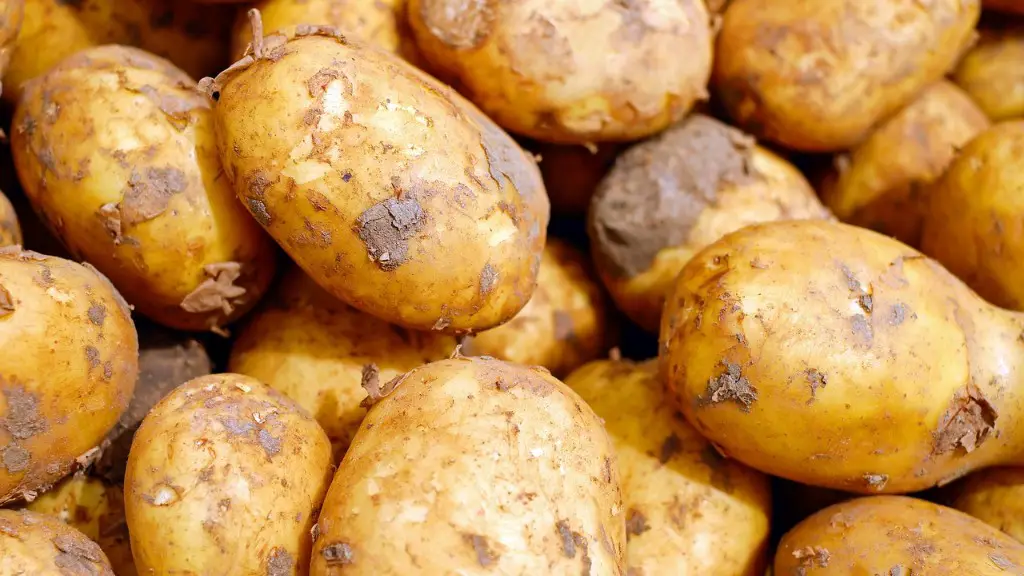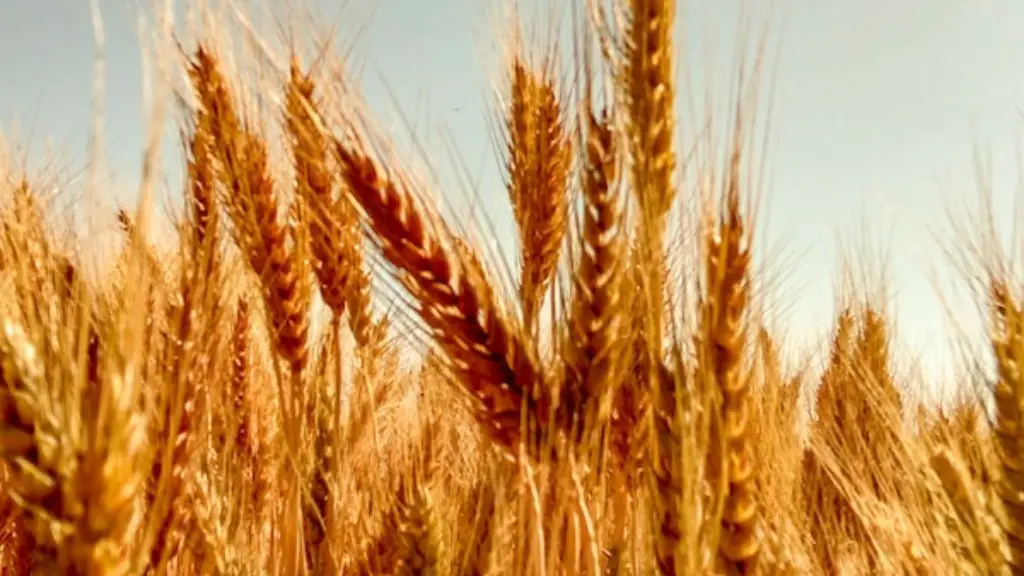Hormones are natural substances that are produced by animals and plants. They are necessary for the proper development and functioning of the body. However, some hormones can also be found in synthetic form. These man-made hormones are often used in agriculture in order to increase the yield of crops or livestock.
The two most common hormones used in agriculture are estrogen and testosterone.
How plant hormones are used in agriculture?
Rooting powder is a great way to promote growth in plant cuttings. The synthetic plant hormones in the powder help to control plant growth, making it an ideal solution for those looking to get their plants to develop roots quickly.
Plant hormones can be used by farmers to manage plant growth. By controlling the release of these hormones, farmers can encourage or discourage certain plant growth processes. For example, by increasing the level of auxin, farmers can encourage cell elongation, which can lead to taller plants. By decreasing the level of gibberellins, farmers can discourage plant growth.
How do farmers use hormones
Hormones are used in the meat and dairy industries to increase the rate of weight gain in young livestock and to increase milk production in dairy cows. Hormones have been used in these industries for decades and are considered safe for both animals and humans. Some critics argue that the use of hormones in livestock production is unnecessary and that it poses a risk to human health, but the evidence does not support these claims.
Plant growth regulators (PGRs) are chemicals that affect plant growth and development. They can be found in nature or synthesized in the laboratory. PGRs are used in agriculture, horticulture, and forestry to regulate plant growth and development, and to improve yields. There are five groups of plant-growth-regulating compounds: auxin, gibberellin (GA), cytokinin, ethylene, and abscisic acid (ABA).
Auxin is a plant hormone that promotes cell growth and differentiation. It is involved in many plant processes, such as seed germination, root development, stem growth, leaf expansion, and fruit ripening.
Gibberellin (GA) is a plant hormone that promotes cell elongation and division. It is involved in many plant processes, such as seed germination, stem growth, leaf expansion, and flower development.
Cytokinin is a plant hormone that promotes cell division. It is involved in many plant processes, such as seed germination, root development, stem growth, leaf expansion, and fruit ripening.
Ethylene is a plant hormone that promotes fruit ripening and senescence (the process of aging).
Which hormone is most widely used in agriculture?
Auxin is a plant hormone that is essential for plant body development. It coordinates many growth and behavior processes in the plant’s life cycle.
A phytohormone is a chemical signal that is produced by a plant that regulates its growth and development. The five major types of phytohormones are auxins, gibberellins, cytokinins, ethylene, and abscisic acid. Each of these hormones plays a different role in plant growth and development, and they often work together to regulate various plant processes.
What hormones make plants grow faster?
Auxin and cytokinin are two plant hormones that regulate plant growth and development. Both hormones are naturally present in plants at different concentrations throughout the season. Cytokinin promotes cell division and cell growth, while auxin regulates cell elongation. Auxin and cytokinin are critical for plant development and play important roles in plant responses to environmental stress.
This is to inform you that despite what you may hear, no artificial or added hormones are used in the production of any poultry in the United States. The regulations of the Food & Drug Administration prohibit the use of such hormones. So, no such hormones are used. Any brand of chicken can be labeled “Raised without hormones” or something like that.
Do hormones in agriculture affect human health
There is now a general consensus amongst scientists that HGPs, when used correctly, do not present any additional health risks to consumers. This is in line with the findings of the World Health Organisation who have found that HGPs are safe to use.
The FDA has approved the use of steroid hormone drugs in beef cattle and sheep since the 1950s. These drugs help to increase muscle growth and weight gain in animals, as well as improve their overall health and well-being. There are both natural and synthetic versions of these hormones available, and they have been proven to be safe and effective for use in livestock.
What are the 7 main hormones?
The pituitary gland secretes a number of hormones that regulate various body functions. The adrenocorticotropic hormone (ACTH or corticotropin) regulates the release of hormones from the adrenal gland. The follicle-stimulating hormone (FSH) and luteinizing hormone (LH) regulate the development and function of the reproductive system. The growth hormone (GH) regulates growth and metabolism. The thyroid-stimulating hormone (TSH) regulates the activity of the thyroid gland. Prolactin regulates milk production.
Auxins are one of the most important plant hormones. The chief naturally occurring auxin is indole-3 acetic acid – IAA and other related compounds. The term Auxin is derived from the Greek language meaning to grow. Auxins play a vital role in plant growth and development. Some of the important functions of auxins are:
• Cell division and cell enlargement
• Stimulation of cell differentiation
• Apical dominance
• Vascular bundle formation
• Root formation
• Fruit development
• Wound healing
Auxins are mainly produced in the shoots and young leaves of plants. They are transported to different parts of the plant where they perform various functions.
What are the 7 hormones and their functions
Hormones play a vital role in the human body and are responsible for a variety of functions. The thyroid gland, for example, releases two hormones, triiodothyronine (T3) and thyroxine (T4), which help in controlling the metabolism of our body. Other important hormones include insulin, estrogen, progesterone, prolactin, testosterone, and serotonin. Each of these hormones has a specific function and helps to keep the body in balance.
Nitrogen, phosphate, and potash are essential nutrients for crop production. They are required for the growth and development of plants, and play a vital role in supplying the world with food, feed, fiber, and fuel.
What plant hormone do farmers use to grow larger fruit?
One of the hormones that helps fruit to increase in size, gibberellic acid, also helps to increase the antioxidant activity of the fruit, making it more juicy. This is just one of the many benefits that this hormone offers to fruit.
Plants have four main types of hormones that regulate various growth and developmental processes. These are Auxin, Gibberellins, Cytokinins, and Abscisic Acid.
Auxin promotes cell enlargement and cell differentiation in plants. Gibberellins break the dormancy in seeds and buds. Cytokinins promote cell division in plants. Abscisic acid promotes the closing of stomata.
Which hormone helps in control of weeds
Auxin herbicides are a type of herbicide that are applied in crop production. They are systemic, meaning they move through the plant, and selective, meaning they preferentially target dicot weeds in cereal crops. This makes them an effective tool in weed control.
Plant hormones are chemical messengers that play an important role in regulating plant growth and development, reproduction processes, longevity, and death. There are six main types of plant hormones: auxins, abscisic acid, cytokinins, ethylene, gibberellins, and brassinosteroids. Each type of hormone regulates specific processes and functions in plants. Plant hormones are essential for proper plant development and function, and their improper regulation can lead to various problems in plants, such as stunted growth, poor flowering, and death.
Final Words
The hormones used in agriculture are typically growth hormones that are used to stimulate growth in animals or crops.
Overall, there are four main types of hormones used in agriculture: plant hormones, animal hormones, microbial inoculants, and growth regulators. Each type of hormone has its own unique set of benefits and drawbacks that growers must weigh when deciding whether or not to use them. In the end, the decision of whether or not to use hormones in agriculture comes down to a matter of personal preference and what will work best for the specific crops being grown.





